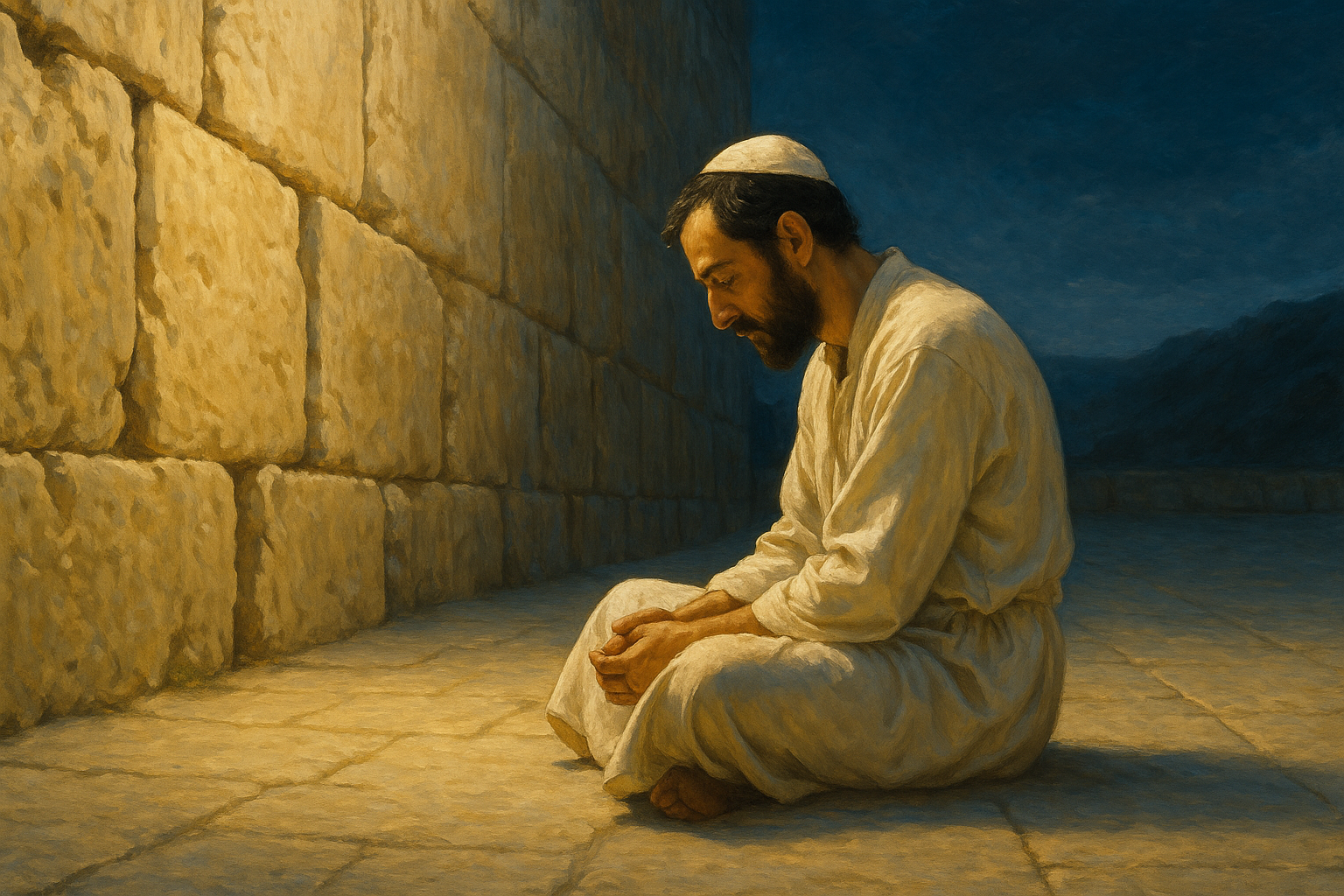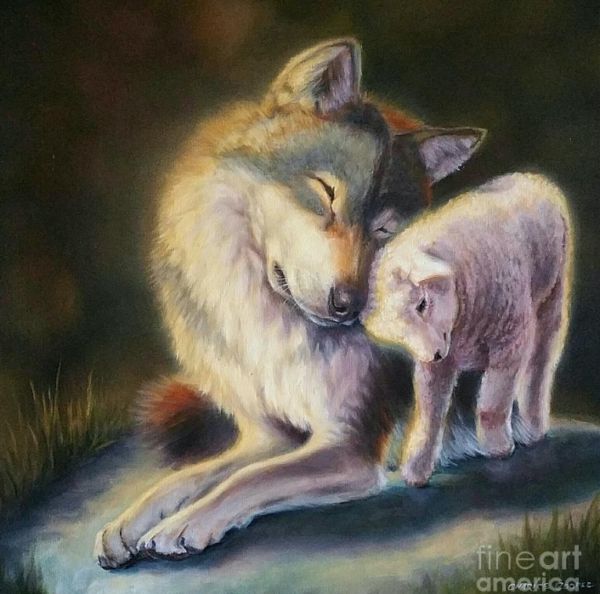Splendor Instead of Ashes

Exchanging the Fire of Judgment for the Light of Geulah
Rabbi Nachman of Breslov wrote (Likutei Moharan II:67): וְהִנֵּה מַה שֶּׁעָבַר אַיִן (Behold—that which has passed doesn't exist). What’s done is done. The Beit Ha-Mikdash already burned to the ground. The Kohanim are no longer doing their avodah, the korbanot are not being offered, and the Levi’im no longer sing their songs of praise. The House of G-d stands in ruins. So why do we keep talking about it? Why do we sit on the floor every Tisha B’Av—and for some of us, every night at midnight—crying for what cannot be undone? What is the point of dredging up the grief of two thousand years ago? What does it change? As people say, "Just move on, already!"
David ha-Melech gives us an unprecedented response, though it raises a deeper question (Tehillim 137:5-6): אִם־אֶשְׁכָּחֵךְ יְרוּשָׁלָ͏ִם תִּשְׁכַּח יְמִינִי׃ תִּדְבַּק־לְשׁוֹנִי לְחִכִּי אִם־לֹא אֶזְכְּרֵכִי אִם־לֹא אַעֲלֶה אֶת־יְרוּשָׁלַ͏ִם עַל רֹאשׁ שִׂמְחָתִי (If I forget you, Yerushalayim, let my right hand forget. Let my tongue cleave to my palate if I do not remember you, if I do not raise Yerushalayim above my chief joy). How do we raise Yerushalayim above our chief joy? Chazal's answer may surprise us (Baba Batra 60b): אָמַר רַב יִצְחָק: זֶה אֵפֶר מִקְלֶה שֶׁבְּרֹאשׁ חֲתָנִים. אֲמַר לֵיהּ רַב פָּפָּא לְאַבָּיֵי: הֵיכָא מַנַּח לֵהּ? בִּמְקוֹם תְּפִילִּין (R' Yitzchak said, These are the ashes that [are placed] on the heads of the grooms. Rav Pappa said to Abaye, Where is it placed? [He answered,] In the place of tefillin). By placing ashes on the forehead at the moment of greatest celebration, under the chuppah, even in the most intimate moment of joy, we stain ourselves with the memory of destruction. But what kind of answer is that, when the house has already burned? Those ashes are not prophetic; they are relics. Why should our greatest joy be marred by ruins we cannot restore?
The Beit ha-Mikdash was not just a building. It was something much more. It was, as the navi says (Yechezkel 24:21): גְּאוֹן עֻזְּכֶם מַחְמַד עֵינֵיכֶם (the brilliance of your might, the delight of your eyes). In short, it was our eyesight. It was how we experienced reality—the Kohanim, the ketoret, the songs, the menorah. These weren’t symbolic gestures of devotion; they were living lenses, illuminating a world that is now blurry and dim. When the Beit ha-Mikdash burned, we became blind.
It is written (Kohelet 12:2): וְשָׁבוּ הֶעָבִים אַחַר הַגָּשֶׁם (And the thick clouds return after the rain). Meteorologically, this makes no sense. Clouds come before the rain, not after it. After the rain comes a clear sky. Here, Shlomo ha-Melech is saying the reverse—that clouds come after it rains. The Gemara explains (Shabbat 151b): זוֹ מְאוֹר עֵינָיו שֶׁל אָדָם שֶׁהוֹלֵךְ אַחַר הַבֶּכִי (This refers to a person's eyesight that diminishes after crying). What is this supposed to mean? R' Nachman explains in Likutei Moharan II:67 that when the Shechinah weeps, when Rachel weeps, when we weep—with every tear—the light of our eyes, our spiritual vision diminishes.
This is why our mourning feels so heavy. It is not the grief—it's the disorientation associated with blindness. The churban did not just take away our House—from G-d's House—it clouded our vision. The world where the Shechinah was tangibly experienced is now opaque. And if we are honest about it, it is not only the Beit ha-Mikdash that is distant. We ourselves are far from Hashem, from each other, and from what we are meant to be.
And this is where the ashes on the forehead begin to resonate. To elevate Yerushalayim above our greatest joy is not to freeze ourselves in grief over the past. It is to insist that we cannot fully rejoice while the world is in exile—while we are in exile—while the Shechinah is in exile. The ashes are not a relic; they are a summons. But a summons to what?
Based on a mystical interpretation of the two great lights that G-d created in the beginning (Zohar ha-Kadosh, Parashat Bereshit 20b on Bereshit 1:16)—'a greater light to rule the day and a lesser light to rule the night'—R' Nachman gives us a radical answer. The churban, he says, was not merely a historical catastrophe. It was a cosmic overturning (Likutei Moharan II:67): וְיֵשׁ מְאוֹרֵי אוֹר וּמְאוֹרֵי אֵשׁ וְהֵם זֶה לְעֻמַּת זֶה שֶׁכְּשֶׁיֵּשׁ כֹּחַ לִמְאוֹרֵי אוֹר אֲזַי נִכְנָעִין מְאוֹרֵי אֵשׁ וְכֵן לְהֵפֶךְ, חַס וְשָׁלוֹם, שֶׁכְּשֶׁנִּכְנָעִין וְנִסְתַּלְּקִין מְאוֹרֵי אוֹר, חַס וְשָׁלוֹם, אֲזַי מִתְגַּבְּרִין מְאוֹרֵי אֵשׁ. וְזֶה בְּחִינַת חֻרְבַּן בֵּית הַמִקְדָּשׁ (There are illuminations of light and illuminations of fire, and they are opposites, for when there is power in the illuminations of light, then the illuminations of fire are subdued, and the other way around, chas v'shalom, when the illuminations of light are subdued and removed, chas v'shalom, then the power of the illuminations of fire increase. And this is the aspect of the churban of the Beit ha-Mikdash).
Consider a simple flame. It is made up of light and fire. When spiritual light—kedushah—is increased in the world, fire—strict justice, harsh decrees, dinim—are diminished in the world, and vice versa. This is what Yirmeyahu was referring to when he lamented the churban (Eichah 1:13): מִמָּרוֹם שָׁלַח־אֵשׁ בְּעַצְמֹתַי (From Above, He sent a fire into my bones). This fire was the 'lesser light to rule the night'—the illuminations of fire—which grew so powerful that they subdued the 'greater light to rule the day'—the illuminations of light. The flames that devoured the Beit ha-Mikdash were not physical. They were spiritual—they were the tragic triumph of din over mercy, concealment over revelation.
But R' Nachman does not leave us mired in the pit of despair. Even though the Beit ha-Mikdash has already burned down—and it's far too late to send the fire department—he nevertheless says something astonishing: אַךְ כָּעֵת שֶׁהַשֵּׁם יִתְבָּרַךְ מְצַפֶּה לָשׁוּב אֵלֵינוּ וְלַחֲזֹר וְלִבְנוֹת בֵּית־מִקְדָּשֵׁנוּ רָאוּי לָנוּ שֶׁלֹּא לְעַכֵּב, חַס וְשָׁלוֹם, בִּנְיַן בֵּית־הַמִּקְדָּשׁ (However, now that Hashem, may He be blessed, yearns to return to us and come back, and to build our Beit ha-Mikdash, it is proper for us that we not obstruct the building of the Beit ha-Mikdash, chas v'shalom). Yes, it's true—what’s done is done. The Holy Temple that once stood in Yerushalayim will not return. But the future Temple waits for us. Hashem is looking forward to returning to us. The House of G-d is not gone; it is just suspended, waiting for its restoration.
And yet, here is where it might sting a bit. We are not only victims of destruction. We can become its accomplices: כִּי אוּלַי בַּגִּלְגּוּל הָרִאשׁוֹן הָיָה הוּא הַגּוֹרֵם שֶׁיֶּחֱרַב הַבֵּית־הַמִּקְדָּשׁ, וַאֲפִלּוּ אִם לָאו, אוּלַי הוּא מְעַכֵּב עַתָּה בִּנְיַן בֵּית־הַמִּקְדָּשׁ, וְנֶחֱשָׁב גַם־כֵּן כְּאִלּוּ הוּא גָּרַם לְהַחֲרִיבוֹ (For perhaps, in a previous gilgul, he caused the churban of the Beit ha-Mikdash, and even if not, perhaps he is now obstructing the building of the Beit ha-Mikdash, and that is considered also as if he caused its churban). R' Nachman speaks with piercing directness. He is saying that if we're not careful, we can become participants in delaying the geulah, chas v'shalom. How? Through passivity.
This framework shifts everything. The churban is not only about the past. It is about the present. The ashes on our foreheads are not inert reminders of what once was. They are calls to action. They tell us, stop delaying. Rise up and meet the Shechinah there in Her sorrow.
And where do we meet Her? Chazal tell us that the Shechinah resides in the West (Baba Batra 25a). R' Nachman says this is no abstraction. It is literal. The Shechinah is at the Kotel ha-Ma’aravi—the Western Wall—the last vestige of the Beit ha-Mikdash. This is the meaning of what the navi wrote (Yirmeyahu 31:15): קוֹל בְּרָמָה נִשְׁמָע נְהִי בְּכִי תַמְרוּרִים רָחֵל מְבַכָּה עַל־בָּנֶיהָ מֵאֲנָה לְהִנָּחֵם עַל־בָּנֶיהָ כִּי אֵינֶנּוּ (A voice is heard on High, wailing, bitter crying—Rachel crying over her children, refusing to be comforted, for they are not). How do we know that the Shechinah, i.e., the aspect of 'Rachel', is in the West? R' Nachman points out the roshei teivot for רָחֵל מְבַכָּה עַל־בָּנֶיהָ (Rachel crying over her children) spell מַעֲרָב [ma'arav, west]. That's where She cries—in the West—at the remaining portion of the Beit ha-Mikdash. Therefore, the Kotel is not a monument. It is a meeting place with the Shechinah-in-exile, with Rachel, mourning for her children who are no longer. Where are they? Where are we? In exile. Therefore, to stand at the Wall—or even to turn our hearts toward it from afar—is to enter the remains of the Beit ha-Mikdash where the Shechinah cries.
R' Nachman not only takes us to the Kotel, but also to the moment when Rachel cries most deeply. We said that we must not be complacent. What can we do to ensure that we're not among those who obstruct, but rather among those who assist? R' Nachman states there: עַל־כֵּן מְאֹד צָרִיךְ לִזָּהֵר לָקוּם בַּחֲצוֹת לִהְיוֹת מִתְאַבֵּל עַל חֻרְבַּן בֵּית הַמִּקְדָּשׁ (Therefore, one needs to be very careful to arise at midnight [chatzot], to mourn the churban of the Beit ha-Mikdash). It is then, in the stillness of the night, that the Shechinah’s voice is heard most clearly. This is not remembrance—it is action. By rising at chatzot to join the Shechinah in Her exile, we exchange the ashes of judgment for the splendor of kedushah. As Yeshayahu promises (Yeshayahu 61:3): לָשׂוּם לַאֲבֵלֵי צִיּוֹן לָתֵת לָהֶם פְּאֵר תַּחַת אֵפֶר (To give to all who mourn for Zion, splendor instead of ashes). This is not a metaphor. It is a literal transformation. The ash, the residue of fiery judgment, becomes the radiant beauty of the Shechinah restored. The mourning itself becomes the agent of building. This is how we subdue the illuminations of fire and replace them with the illuminations of light.
This is the path out of our national amnesia. The ashes are not symbols of defeat. They are the tools of redemption. They remind us that the Beit ha-Mikdash is not simply a past glory; it is a future project. When we rise at chatzot, when we mourn with Rachel, when we mourn with the Shechinah in the West—we stop obstructing the rebuilding of the Beit ha-Mikdash. We take ourselves out of the camp of those who destroyed it and place ourselves squarely in the camp of those who rebuild it. It's not about politics—it's about avodah.
Tikkun Chatzot is neither nostalgia nor self-flagellation. It is a partnership with Hashem in the central act of creation to accelerate the geulah. How can we even think of abandoning Her at the time of Her greatest vulnerability? At chatzot, when the Shechinah weeps, we are supposed to join Her. That is when we lift the ashes of our history and offer them back to Hashem, trusting His promise to exchange them for splendor. We push back against the illuminations of fire with the illuminations of light. This is how we become active participants in the rebuilding of Hashem’s House, and this is how we regain our vision.






